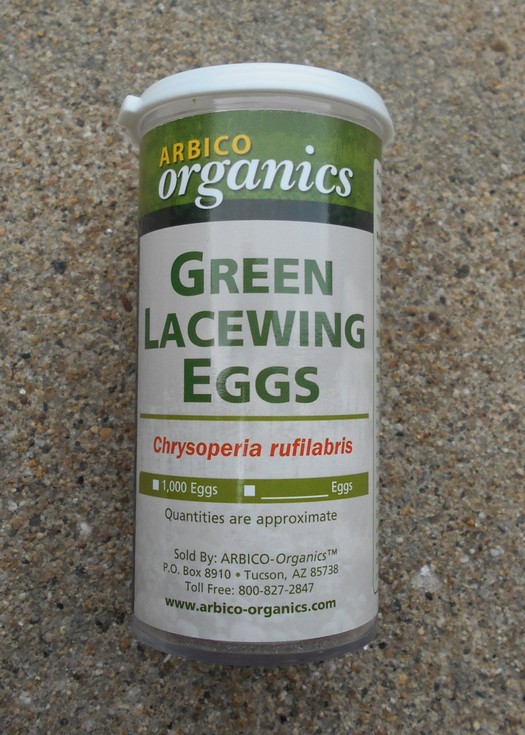| |
|
Entry Date
|
Nick Name
|
Location
|
|
Thursday, June 11, 2015
|

|
Matt D.
|
Connecticut
|
 |
Entry 22 of 92 |
 |
|
|
|
In an effort to combat aphids that have been transmitting virus to my patch I have gone with a three part plan. What makes things very challenging is that insecticides do not work fast enough (only takes seconds to transmit the virus) so I have to go with other means to simply have the aphids avoid coming in contact with my plants.
The first part is something that I do not think is being used much in the United States (at least in field applications) and that is the use of beneficial insects to attack pest insects. There is a lot of planning that must be done, as there are many variables to consider. Some that I took into consideration and what I decided on are listed below�
1. Type of insect to get? (Green Lacewings: Chrysoperia rufilabris)
2. Stage of development to get the insects? (Egg stage, most cost effective)
3. How many? (5,000 for my area)
4. How often to repeat a release? (About every 7-10 days)
5. How and where to release the insects? (Mist the area with water and sprinkle the eggs with their rice hull carrier in many small areas around and in the pumpkin patch.)
6. When to start releasing? (Around May 22nd)
7. How long to release for? (I made three separate applications with the last one being a double dose of 10,000 eggs)
My �dirty� aphids (those that were carrying the virus) were coming in to my area around June 1st to the 10th. So I started my weekly releasing of my Green Lacewings around May 22nd to give time for the eggs to hatch (it takes 2-5 days) and be on the hunt for aphids in the area. The larvae feed for about 7-21 days so this will offer extended coverage as I was releasing more (about 5,000 eggs) each week so by time some of my Green Lacewings were nearing the end of their feeding cycle others would just be stating. The goal was to always keep feeding Green Lacewings in the area especially during the highest odds when initial virus infection has been known to occur.
|
|
|



